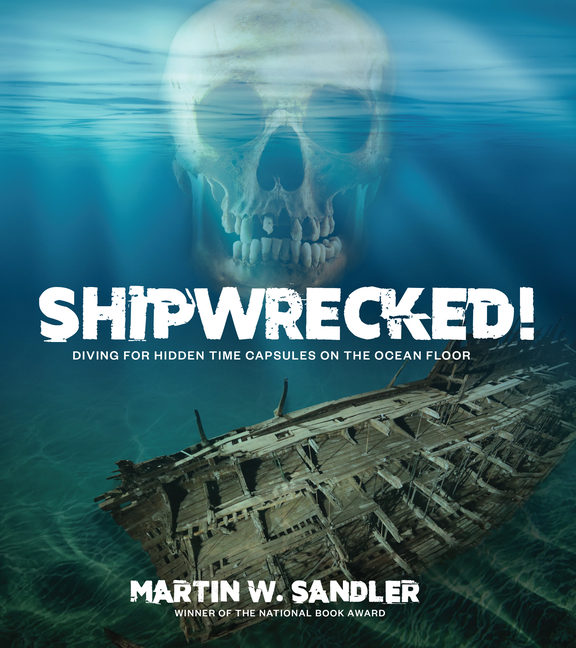
The Fate of the Bonhomme Richard
My latest book, Shipwrecked: Diving for Hidden Time Capsules on the Ocean Floor, was inspired by an idea I once read that made an enormous impact on me, and it’s that the ocean floor is the world’s greatest museum. There are more than three million shipwrecks lying at the bottom of the ocean, and many of them, like the vessels I featured in my book, are true time capsules, providing us with invaluable information about the era in which they sailed the seas, the people who built them and the people who sailed upon them, the places from which they sailed, the nature of the cargo they carried, the routes they took, the places to which they journeyed, and the ships themselves.
Some, like the legendary Spanish galleon the San Jose that went down in 1708, have been fervently sought for the treasure aboard them. Many others, like those portrayed in my book, are warehouses of history.
One story of a lost ship that I love that didn’t make it into the final book is the story of the Bonhomme Richard. Originally named Duc de Duras and built in France as a merchant ship that could easily be transformed into a man-of-war, the ship made several trading voyages until, early in 1779 during the American Revolution, she was purchased by France’s King Louis XVI and given to the United States Navy to be used in America’s conflict with France’s arch enemy Great Britain. Upon receipt of the ship, commander John Paul Jones renamed it the Bonhomme Richard in honor of his hero Benjamin Franklin.
In August, 1779, the Bonhomme Richard, now fully fitted as a warship, sailed as part of a squadron looking to wreak havoc on British shipping. Within a short time, the squadron had captured 16 British merchant ships. Then, on the evening of September 23, 1779, in waters off Flamborough Head Yorkshire, England, the squadron encountered a huge British fleet led by the large and powerful warship the HMS Serapis. Immediately the Bonhomme Richard and the Serapis entered into an horrific four-hour battle that would take the lives of almost half of each of its crews. At one point, as the Bonhomme Richard become increasingly devastated by the Serapis’s superior fire power, the British vessel’s commander called upon Jones to surrender. His answer, “I have not yet begun to fight,” remains immortalized in military lore.
Given the determination of both sides, it seemed as if the battle would go on forever. Then, suddenly, an American grenade found its way through an open hatch in the Serapis, causing a series of enormous and disastrous explosions. The British commander was left with no choice but to lower his battle flag and surrender. Jones took control of the Serapis, imprisoned its remaining crew, and sailed off in triumph. The Bonhomme Richard, on the other hand, was too badly damaged to survive and sank the next day.
The impact of the Bonhomme Richard’s victory was huge and immediate. Though the vessel was lost, the courage and determination of its commander and crew convinced the French government to back the American colonies in their fight for independence. That aid that would prove invaluable. To this day, the wreckage of this ship has never been located.

Hear Martin W. Sandler’s Audio Name Pronunciation
Listen to a Meet-the-Author Recording for Shipwrecked
Explore Martin W. Sandler’s author page on TeachingBooks
Text and images are courtesy of Martin W. Sandler and may not be used without express written consent.


I would love to speak with Martin W. Sandler.